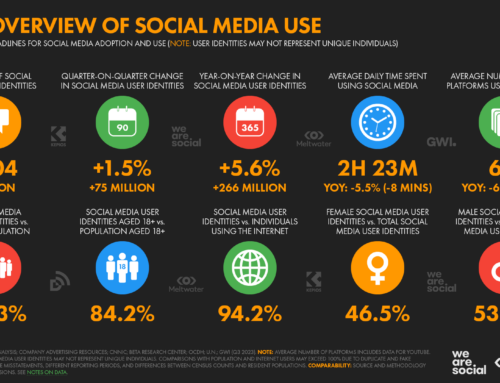 To be successful on social media, it’s crucial to prioritize… well, being “social”. In fact, if you don’t plan on consistently engaging with your audience, it’s best to stay off social media altogether.
To be successful on social media, it’s crucial to prioritize… well, being “social”. In fact, if you don’t plan on consistently engaging with your audience, it’s best to stay off social media altogether.
If at this point, you’re mumbling under your breathe “Okay, Captain Obvious”, that’s fair, but are you really sure of what it takes to “engage”? For us nonprofit marketers, its remembering that social is a two-way conversation. It’s not just about us promoting ourselves, but also about really connecting with our audiences.
Connecting for engagement
Just like IRL (in real life), building strong relationships with your audience is paramount to maintaining engagement on the platforms. The most effective content creators (and marketers) approach their social media strategy with a focus on relationship building. This requires consistency, integrity, personalized attention, and a deep understanding of their audience’s needs (this is where developing personas helps). Once you have that, its time to tailor your content to those preferences and needs.
The next steps are posting regularly, responding to messages, and showing personality in an authentic and engaging way. Remember, people turn to social media to connect and engage with others, to feel seen, heard, and to learn something new. By being social, you can create a sense of community and build a loyal following. So, if you’re not planning on being…yup – social, it’s best to avoid social media altogether.
Here are some other tips for making social media work for you:
The Dos
DO:
Master storytelling. We hear this all the time as marketers – especially in the nonprofit world. But, social media is about connecting and stories still resonate.
Whether it’s a story from the perspective of the populations you serve (animals, too!) or historical context about how your organization came to be – stories will not only help you stand out from the competition, but also give you the opportunity to be creative and showcase what makes your organization unique. Plus, they are sticky and memorable!
DO:
Make it personal. Social is about connecting and stories resonate. Do you know the KLT principle? KLT stands for know, love, trust and it’s a principle that basically says if you want someone to go from a stranger to supporter, donor, or customer they need to:
- Get to know you
- Start to like you
- Build trust with you
What is the best way to get to know you? Get real, personal, and authentic. Tap into your followers emotions by sharing the perspectives or behind the scenes day-to-day work or commentary of staff, service recipients, or supporters.
And, use casual language that sounds natural and conversational to invite your followers into the discussion, which can make a big difference in how they perceive your organization.
The Don’ts
DON’T:
Leave your followers on “read”! Like, comment, and respond to followers. Host lives where you can facilitate questions and answers and respond to followers’ comments. This is also a great way to learn more or validate your knowledge about your audience – with a two way conversation. Social is a two way conversation!
Want to learn more about who is following you? You can also check out Kivi’s article on How to Learn More about Your Followers.
DON’T:
Hang your hat on just social.
Building connections on social is great, but these are third-party platforms where we don’t have proprietary rights. Keep a focus on the other elements of your marketing and communications strategy that you do have ownership of. Examples of these? Your website and especially your email lists.
You may also want to explore options for creating your own online communities through paid platforms like Circle, Tribe, or Hivebrite. These companies help you create spaces for your audience to connect with one another and build a sense of community around your organization’s cause. Self-managed communities can foster a deeper sense of engagement and loyalty among your supporters, and can also provide you are your team valuable insights into their needs and preferences.
Remember the keys to success
The key to success on these platforms is understanding the needs of your audience and the algorithm. Your audience craves content that is interesting, valuable, and entertaining, which is exactly what the algorithm seeks to promote to keep users on the platform for as long as possible.
Social media is constantly changing but one thing that will remain consistent is the importance of being social. Make the effort to be engaging, responsive and interactive and it will result in increased engagement, more followers, higher conversion rates, and ultimately more success for critical social impact organizations like ours.
Tired of trying to keep up with social media best practices? We’ll get you up to speed in one hour during our webinar Social Media Trends for Nonprofit Communicators in 2023






